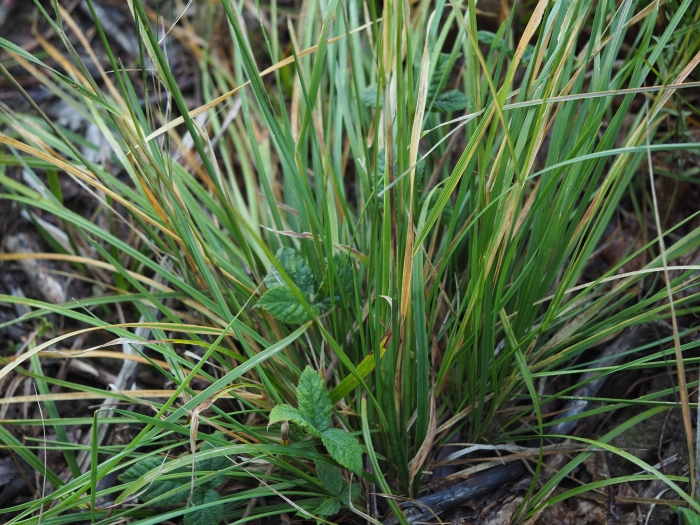Tufted Hairgrass
(Deschampsia cespitosa)
Tufted Hairgrass (Deschampsia cespitosa)
/
/

carnifex
CC BY 4.0








































































Estimated Native Range
Summary
Tufted Hairgrass is a versatile ornamental grass that is used in a variety of garden settings, including meadow plantings, borders, and as ground cover. It provides winter interest and is often left standing until early spring for its aesthetic appeal. It is relatively low-maintenance, requiring medium amounts of water and thriving in part shade to full sun. It prefers well-drained soils but is tolerant of different soil types. The cultivars ’Goldschleier’ and ’Goldtau’ have been recognized for their exceptional beauty with the Royal Horticultural Society’s Award of Garden Merit. While generally disease-free, it can suffer from rust in wet conditions. It is not known for being invasive but can self-seed in ideal conditions.CC BY-SA 4.0
Plant Description
- Plant Type: Grass
- Height: 2-3 feet
- Width: 1-2 feet
- Growth Rate: Moderate
- Flower Color: N/A
- Flowering Season: Summer, Fall
- Leaf Retention: Semi-Deciduous
Growth Requirements
- Sun: Full Sun, Part Shade
- Water: Medium
- Drainage: Medium
Common Uses
Bank Stabilization, Bird Garden, Border Plant, Butterfly Garden, Deer Resistant, Drought Tolerant, Erosion Control, Fire Resistant, Groundcover, Low Maintenance, Potted Plant, Rabbit Resistant, Rock Garden, Salt Tolerant, Street Planting, Water Garden
Natural Habitat
Moist meadows, grasslands, and open woodlands
Other Names
Common Names: Tufted Hair Grass, Tussock Grass, Small-Flowered Ticklegrass, Mose-Bunke, Rasenschmiele, Rasen-Schmiele, Grama Del Monte, Nurmilauha, Aire Gazonnante, Canche Flexueuse
Scientific Names: , Deschampsia cespitosa, Aira caespitosa, Aira cespitosa, Deschampsia turczaninowii, Deschampsia cespitosa var. aurata, Deschampsia cespitosa var. varia, Deschampsia cespitosa subsp. hispanica, Avena cespitosa, Deschampsia cespitosa var. flavescens
GBIF Accepted Name: Deschampsia cespitosa (L.) P.Beauv.